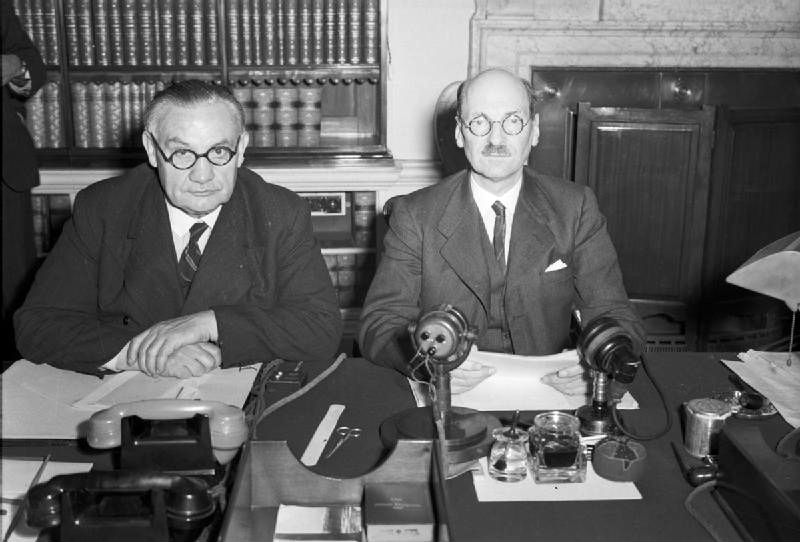
Image: Prime Minister Clement Attlee with Foreign Secretary Ernest Bevin, photographed in 10 Downing Street on 14 August 1945. Courtesy of Wikimedia Commons.
Download PDFs: The Labour Government and the End of Empire, 1945-1951, in four parts
Part One: High Policy and Administration [234MB]
Part Two: Economics and International Relations [257MB]
Part Three: Strategy, Politics and Constitutional Change [213MB]
Part Four: Race Relations and the Commonwealth [202MB]
Volume Details: Series A, Volume 2. First published by The Stationery Office in 1992. Electronic version reproduced with permission of the editor under an Open Government Licence.
Editor Details: RONALD HYAM is Emeritus Reader in British Imperial History, University of Cambridge, and a Fellow and former President of Magdalene College. He is Co-Editor, with Wm Roger Louis, of the BDEEP general volume, The Conservative Government and the End of Empire, 1957-1964 (2000) and the author of Britain’s Imperial Century, 1815-1914 (2nd edn, 1993).
Selection from Introduction:
“Two quintessential themes dominated the colonial policy of the Labour government between 1945 and 1951: economic recovery and Russian expansion. Almost all overseas policy-making evolved within the fundamental parameters provided by the dollar shortage and the cold war. Both problems predicated enhanced interest in the empire in general and in Africa in particular. The minister of defence (A V Alexander) in October 1949 defined the three main policy objectives of the government as: (i) to secure ‘our people against aggression’, (ii) to sustain a foreign policy dominated by global ‘resistance to the onrush of communist influence’, and (iii) to achieve ‘the most rapid development practicable of our overseas possessions, since without such colonial development there can be no major improvement in the standard of living of our own people at home’.2 A CO minister might have added some rather more altruistic goals, but there is no doubt that Alexander reflected the sense of priorities held by the majority of the Cabinet.” (Part One, p.xxiii)
